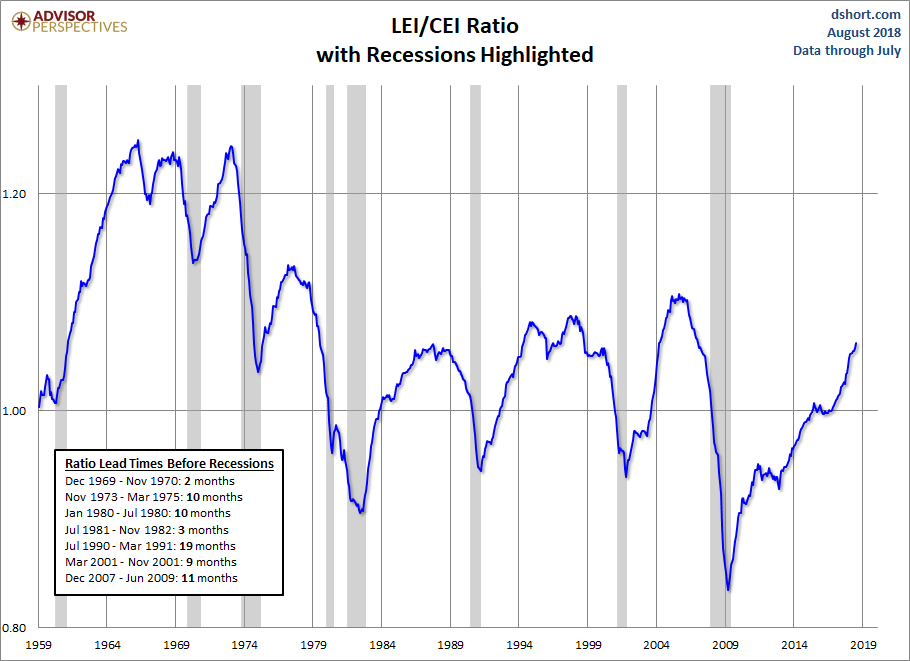Conference Board Leading Economic Index: Increased Growth In July
The latest Conference Board Leading Economic Index (LEI) for July increased to 110.7 from 110.0 in June. The Coincident Economic Index (CEI) came in at 104.2, up from 104.0 the previous month.
The Conference Board LEI for the U.S. increased again in July, with positive contributions from all its components, except for weekly manufacturing hours which was unchanged. In the sixmonth period ending July 2018, the leading economic index increased 2.7 percent (about a 5.5 percent annual rate), slower than the growth of 3.6 percent (about a 7.2 percent annual rate) during the previous six months. In addition, the strengths among the leading indicators have remained widespread, with the majority of components advancing over the past six months.
The Conference Board CEI for the U.S., a measure of current economic activity, also improved in July. The coincident economic index rose 1.4 percent (about a 2.7 percent annual rate) between January and July 2018, somewhat faster than the growth of 1.0 percent (about a 2.0 percent annual rate) over the previous six months. The strengths among the coincident indicators remain very widespread. The lagging economic index declined, while the CEI continued to improve. As a result, the coincident-to-lagging ratio is up slightly. Real GDP expanded at a 4.1 percent annual rate in the second quarter, after increasing 2.2 percent (annual rate) in the first quarter. [Full notes in PDF]
Here is a log-scale chart of the LEI series with documented recessions as identified by the NBER. The use of a log scale gives us a better sense of the relative sizes of peaks and troughs than a more conventional linear scale.
(Click on image to enlarge)
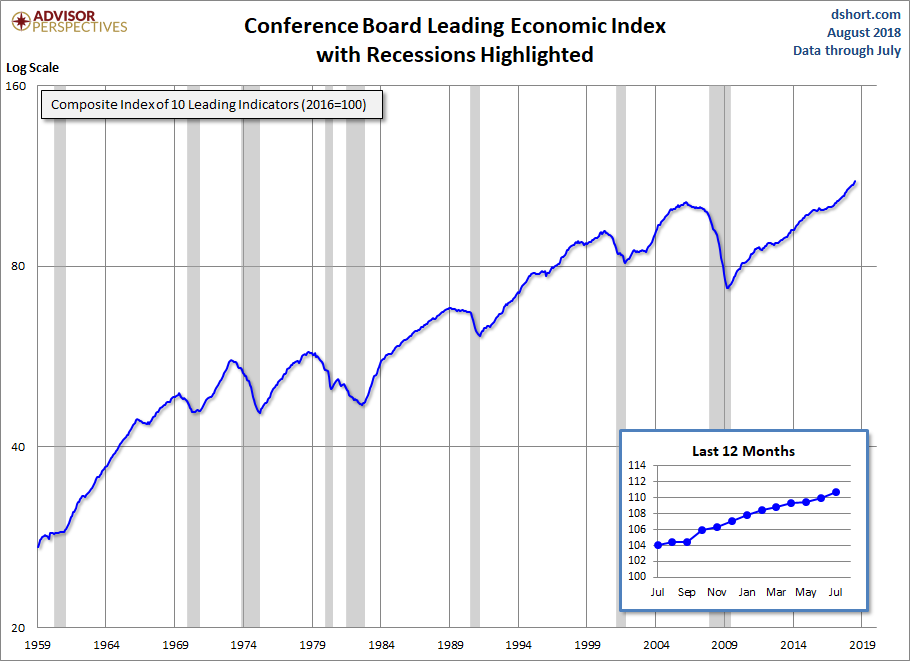
For additional perspective on this indicator, see the latest press release, which includes this overview:
“The U.S. LEI increased in July, suggesting the US economy will continue expanding at a solid pace for the remainder of this year,” said Ataman Ozyildirim, Director of Business Cycles and Growth Research at The Conference Board. “The strengths among the components of the leading index were very widespread, with unemployment claims, the financial components, and the ISM® New Orders Index making the largest positive contributions”.
For a better understanding of the relationship between the LEI and recessions, the next chart shows the percentage-off the previous peak for the index and the number of months between the previous peak and official recessions.
(Click on image to enlarge)
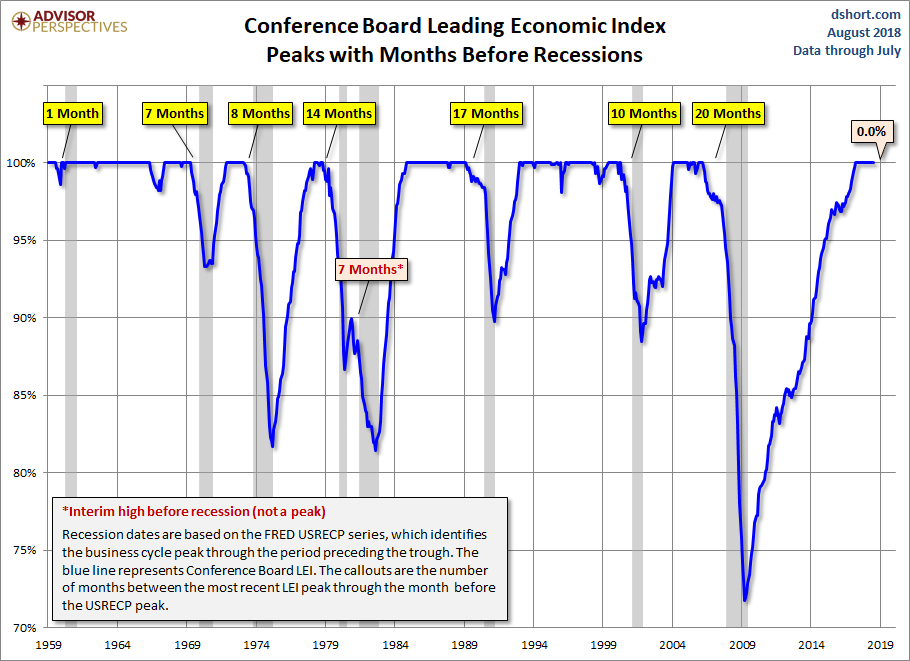
LEI and Its Six-Month Smoothed Rate of Change
Based on suggestions from Neile Wolfe of Wells Fargo Advisors and Dwaine Van Vuuren of RecessionAlert, we can tighten the recession lead times for this indicator by plotting a smoothed six-month rate of change to further enhance our use of the Conference Board's LEI as a gauge of recession risk.
(Click on image to enlarge)
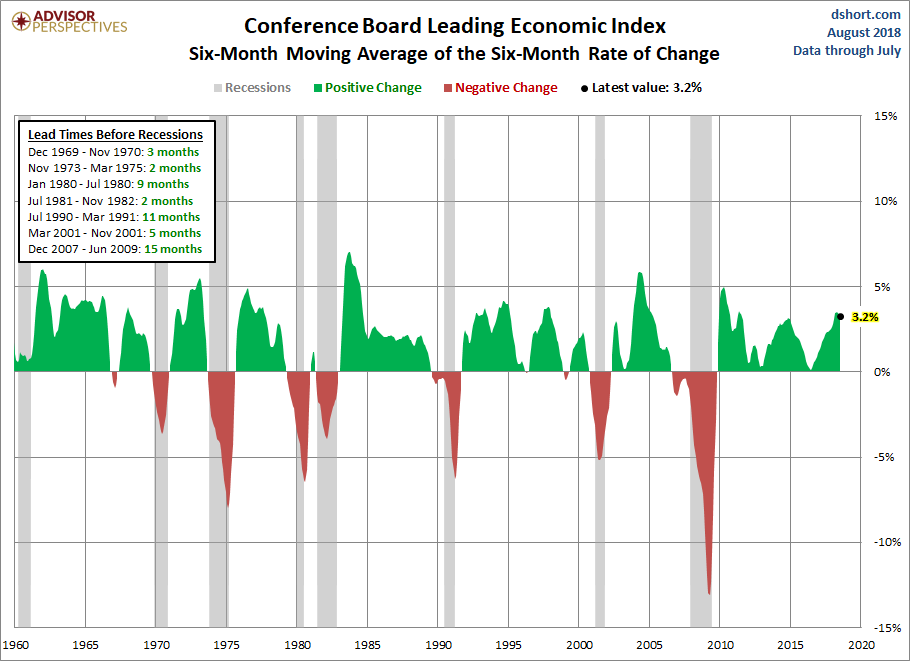
As we can see, the LEI has historically dropped below its six-month moving average anywhere between 2 to 15 months before a recession. The latest reading of this smoothed rate-of-change suggests no near-term recession risk. Here is a twelve month smoothed out version, which further eliminates the whipsaws:
(Click on image to enlarge)
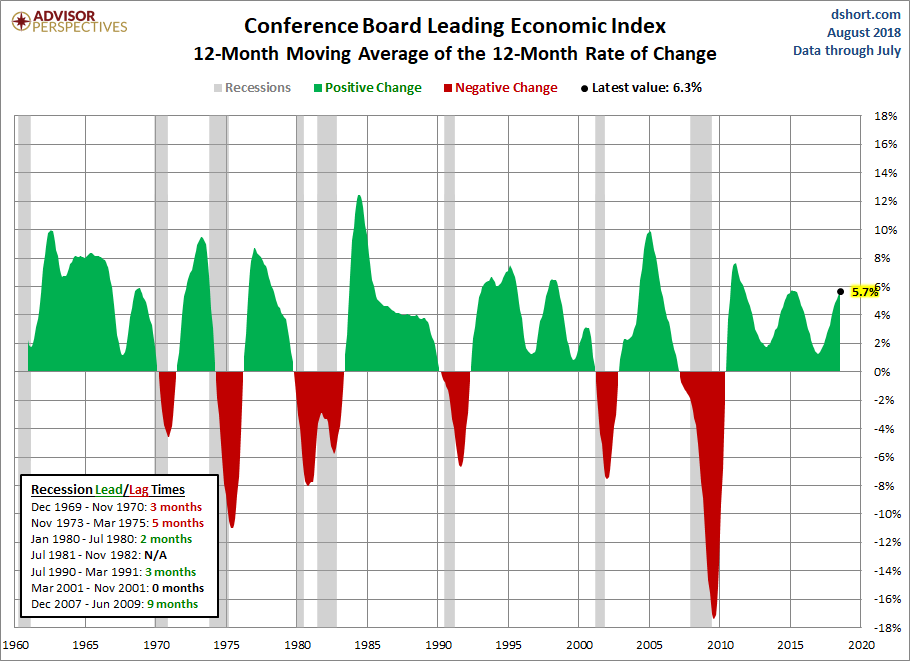
The Conference Board also includes its Coincident Economic Index (CEI) in each release. It measures current economic activity and is made up of four components: nonagricultural payroll, personal income less transfer payments, manufacturing and trade sales, and industrial production. Based on observations, when the LEI begins to decline, the CEI is still rising. Here's a chart including both the CEI and LEI.
(Click on image to enlarge)
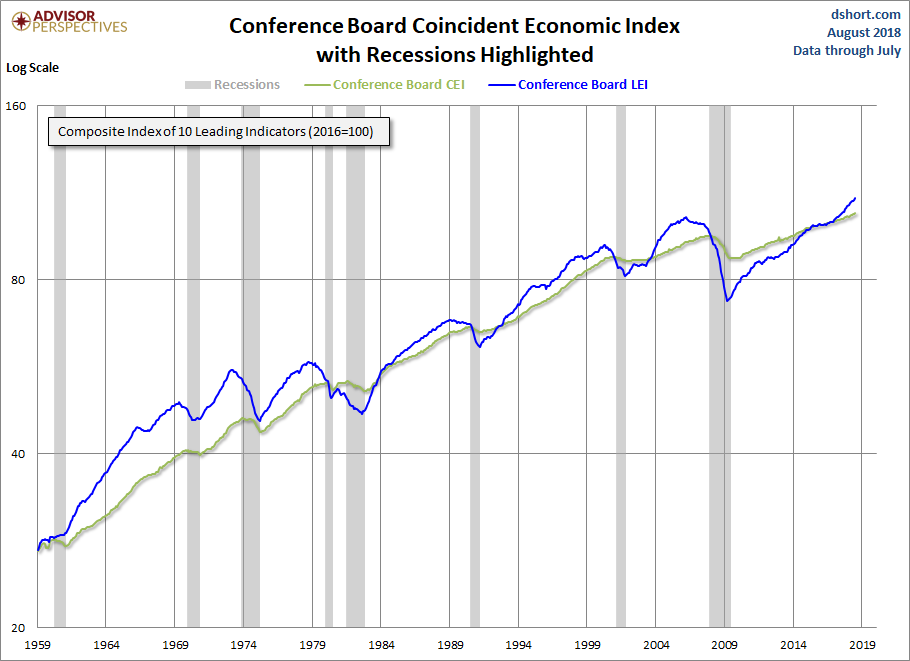
Here is a chart of the LEI/CEI ratio, which is also a leading indicator of recessions.
(Click on image to enlarge)
